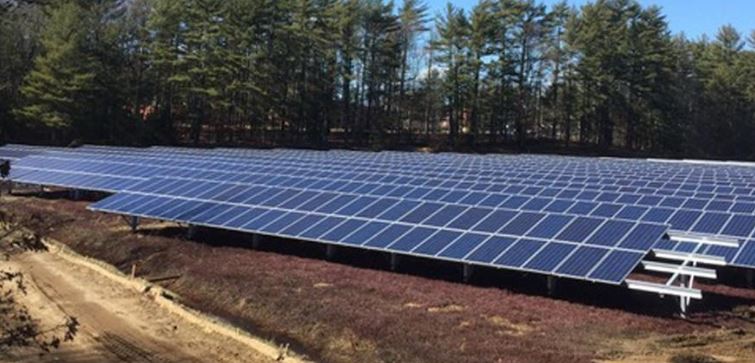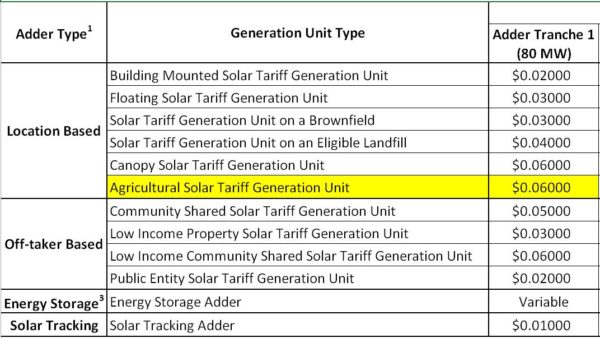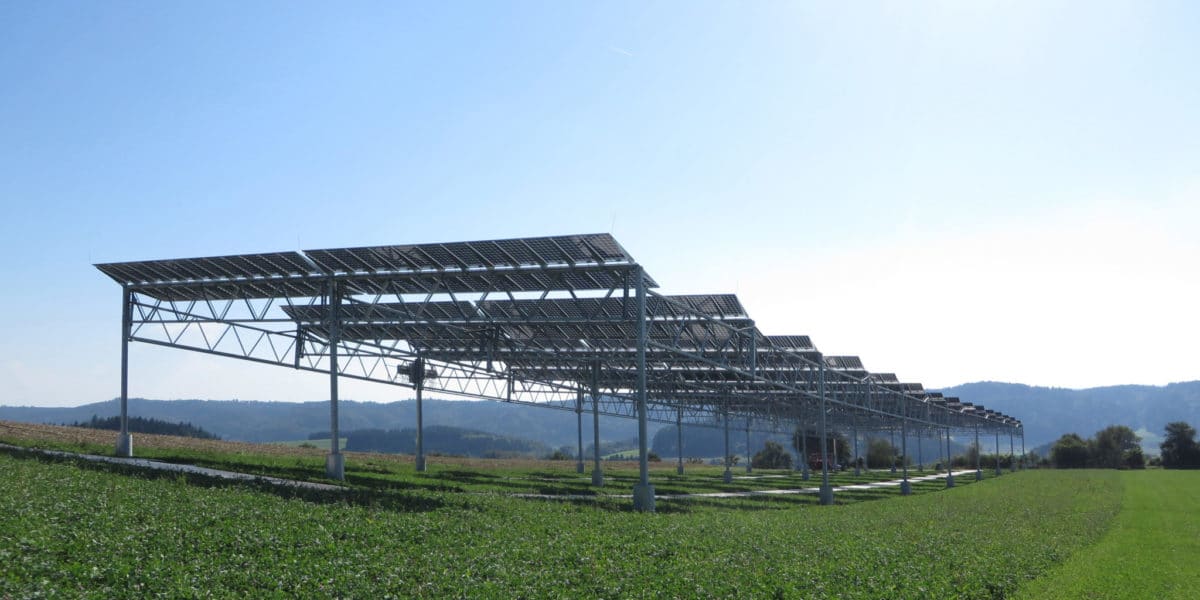They’re called solar farms for a reason – we deploy our seeds of steel, we water the ground with copper, and we pray to the sun gods for plentiful photons! Our previous coverage has noted the trend toward pollinator friendly solar farms, but this is just the beginning.
A recent story by SouthCoast Today on cranberry bogs in Massachusetts shows the stresses of the farming life as the market value of cranberries falls. In the article, a farmer from Carver shows off a bog that has been fully converted to a standard solar power installation:

The City of Dartmouth, where pv magazine author resides, is now grappling with whether to adjust town ordinance and allow a 30-acre solar farm that makes use of a new technique to co-locate solar power and traditional farming: called agrovoltaics (or agro-photovoltaics).
The new SMART program by Massachusetts incentivizes agrovoltaics to the tune of an additional 6¢/kWh in a 20-year contract (see image below):

In designing the solar power incentives for the next 1.6 GW to be deployed in the state, program designers made it clear that the state didn’t want to destroy our farms and forests for solar power. As noted in the SouthCoast Today article, the 30-acre solar farm system is not the standard ground mount, but is instead located eight to ten feet above the ground. It must also be demonstrated that the solar power system will not lessen sunlight to any farming lands by 50% or more. These and other requirements of design are located in the state’s Definition of Agricultural Solar Tariff Generation Units Guideline (PDF).
Imagine something like this, but probably denser:
The first #agrivoltaic project in Chile, 2017 – @FraunhoferChile https://t.co/D5zLuViNSb#agrivoltaics #agrivoltaique #agrivoltaiques #agrivoltaisme #solarsharing #agriphotovoltaïsme #agrovoltaic #AgTech pic.twitter.com/OjQfmeqUV5
— Thibault Frisson (@ThibaultFrisson) July 28, 2018
One of the world’s largest agrovolatic systems is built in China by Huawei. The system is 1 GW-DC, and utilizes trackers and module level electronics.
The smartest #agrivoltaic application: combating desertification – World's largest #agrivoltaic system – 1 GW in a arid region of China – goji #agrivoltaics #agrivoltaique #agrivoltaiques #agrivoltaisme #solarsharing #agriphotovoltaïsme #agrovoltaic #AgTech pic.twitter.com/gmbeWrEb8u
— Thibault Frisson (@ThibaultFrisson) July 12, 2018
As seen in the above Twitter account, Thibault Frisson is a consultant who specifically focuses on integrating the proper crop distributions under various racking structures in agrovoltaic deployments. Frisson cannot do a wind load analysis, but he can make sure your cranberries grow full and strong.
There have been many scientific studies at this point looking to tie together crops and solar power. In research presented by the Fraunhofer Institute for Solar Energy Systems, (the source of this articles header image), we got to see both the cost in crop yield and gain in electricity revenue:
The crop yield of clover grass under the PV array was only 5.3 percent less than the reference plot. The yield losses for potatoes, wheat and celeriac are between 18 to 19 percent and therefore somewhat higher. With an installed power of 194 kilowatts, the photovoltaic array can supply 62 four-person households with electricity. In the first twelve months, the array produced 1266 kilowatt-hours electricity per installed kilowatt, one third more than the average value of 950 kWh/kW in Germany.

The combining of the two resources, while it lowered the output of either compared to a pure installation, was a “160% increase” in a combined agricultural and electricity output. What this 160% number means to individual groups varies of course, as the price of electricity and the crop varies by region – but its clear that its more than either on its own.
This is also an area where bifacial modules are proving their worth.
This content is protected by copyright and may not be reused. If you want to cooperate with us and would like to reuse some of our content, please contact: editors@pv-magazine.com.








“This is also an area where bifacial modules are proving their worth.”
That last line is an example why I like coming here.
https://i.imgur.com/kUhVJJr.gif
Same gesture should be extended to nigeria where an average home experience power supply for less than 3hours in a day and farmers often comit suicide due to crop failure.
I am a nigerian,I conductected an extensive research in agrivoltaics in india as my msc project.I discovered among others that nigeria need agrivoltaics more than most countries where it is currently enjoying a wide acceptance.I therefore urge private organisations and NGOs to come to the aid of nigeria on this regard.A copy of my thesis report may be sent for perousal on request